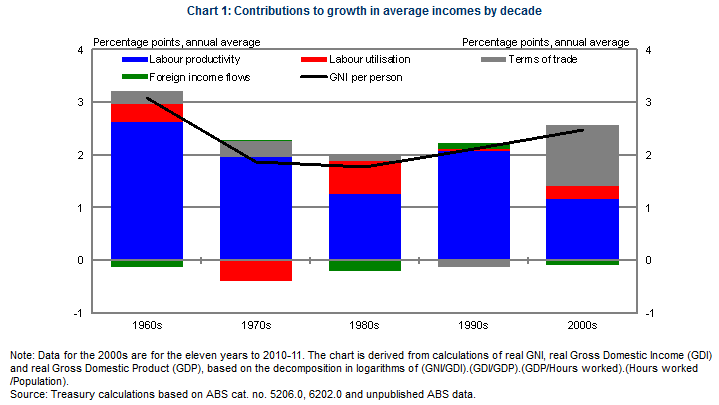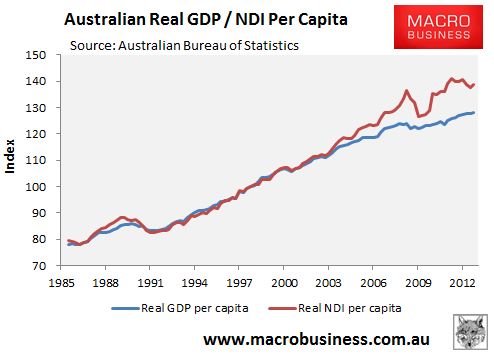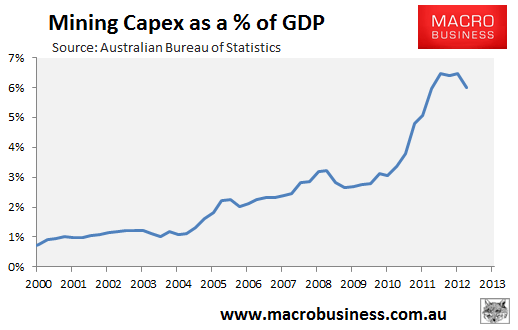
Treasurer Wayne Swan rides his mule into the ground today hunting down the recessionista:
Mr Swan called media stories on the prediction “deeply irresponsible” and “incredibly reckless”, calling such forecasts efforts “to get their company’s name in the paper”, while criticising media outlets for not pointing to previously false predictions of Australian recessions.
“The consequences of these kind of half-cocked misrepresentations about our economy live on for much longer than the news cycle…Tellingly, this … was the third time in the last five years economists from Goldman Sachs had predicted the same chance of a recession. Did these predictions eventuate? Of course not. Was this mentioned in any of today’s stories? Of course not.
He slammed Goldman Sachs for ignoring record-low interest rates, and the Reserve Bank of Australia’s ability to further lower rates if it judges necessary before Australia’s economy would risk entering a recession.
Mr Swan said the Australian economy’s shift out of the resources boom should not be mistaken for a descent into recession.
Let’s just repeat. GS predicted a 20% risk of recession. They didn’t forecast a recession. The AFR rounds up the recessionista and puts them against the wall today as well. According to the paper, independent economist (with a long history of working in financial services), Nicki Hutley says:
“I think it is very overblown,” independent economic analyst Nicki Hutley said. “We should be concerned that growth will be sluggish or sub-trend over the next 12 months but to use the ‘R word’ is premature,” she said, adding the chance of a recession within the next year would be below 20 per cent.
National Australia bank economist Rob Hendeson says: “Twenty per cent sounds a bit rich to me. I think it is alarmist to say that markets are pricing in a recession or Australia is headed towards one.”
Westpac economist Huy McKay says “The economy faces considerable medium- and long-term challenges but none are insurmountable with a deft handling of the major policy levers, allied to a reinvigoration of productivity enhancing reforms,” Westpac senior international economist Huw McKay said, adding that he doesn’t see a recession happening in Australian any time soon.
…PIMCO Australia head of portfolio management Rob Mead said while Australia may avoid a technical recession, the economic environment will still resemble one.
Meanwhile, argument is left to those keeping their heads. The Australian’s David Uren today writes a ripper summarising the key risks to living standards as the commodity price boom unwinds and Australian income growth comes under pressure from the falling terms-of-trade. Let’s take a look:
People do not appreciate how much their living standards have improved, Treasury secretary Martin Parkinson told the Senate’s economics committee last week.
He estimated that the combination of the benefits flowing from the economic reforms of the 1980s and 90s and the surge in the prices of our export commodities had been adding about 2.5 per cent a year to people’s living standards for about 20 years.
This added up to an increase of more than 50 per cent…
Throughout the 90s, the increase in living standards was driven by productivity rising at a rate of more than 2 per cent a year. Households gained from the productivity growth with incomes growing more rapidly than the cost of living.
Across the past decade, productivity growth has been much weaker, but soaring commodity prices have brought huge benefits across the community…
With export prices now falling, he argues that productivity growth is the only way to sustain the living standards we have become accustomed to.
If productivity growth were to continue at its long-term average of 1.5 per cent a year, but the terms of trade fell by 7.5 per cent a year, living standards would be at a standstill. If productivity growth were lower, or the fall in export prices steeper, living standards would fall.
Treasury does not expect such a fall in export prices. It believes China will keep growing at more than 7.5 per cent a year indefinitely…
Some think this is cloud cuckoo land. Leading academic economists Ross Garnaut and Bob Gregory have pointed out that previous commodity booms have ended in busts.
…the half-dozen resource booms of the past 140 years have all ended abruptly, with the low point in each cycle dropping below the one before…
If Garnaut is even half right, the fall in export prices will be too rapid for any foreseeable increase in productivity to offset… The implication is that the next government may face the political challenge of managing a historic fall in average living standards. It would have to explain that the gain in living standards of the past decade was never more than a temporary gift from China that the workforce at large had done nothing to deserve…
The Treasury Secretary, Dr Martin Parkinson’s, remarks about the impact of the once-in-a-century rise in Australian commodity prices, and the beneficial impact on Australian living standards, are best summed-up by the below Treasury chart, which shows half the growth in average incomes over the 2000s coming from the surging terms-of-trade:

Whereas in prior decades, Australian incomes grew primarily on the back of rising productivity and/or improved labour force participation, over the 2000s they grew because the price of the things that we export – mainly commodities such as iron ore, coal, natural gas, and coal – rose dramatically on the back of China’s insatiable demand for resources.
In turn, Australia effectively received a large pay rise, since more imports could be bought with a given volume of exports. As a result, real (inflation-adjusted) average national disposable incomes (NDI) rose at a much faster rate than justified by the growth of the Australian economy, as measured by real per capita GDP (see next chart).

The sharp rise in commodity prices also underpinned government budgets, which reaped the benefit of rising personal and company taxes, as well as resource rent taxes. Some of this extra taxation revenue was also re-distributed to households via tax cuts and welfare payments, thereby further inflating disposable incomes.
The problem going forward is that commodity prices and the terms-of-trade are now falling and will likely continue to do so. This will drag heavily on income growth, with real per capital NDI likely to grow at much slower rate than real per capita GDP (i.e. the top line above will converge with the lower line).
To make matters worse, mining related capital expenditures (capex), which more than doubled over the past two years, looks to have peaked and will likely decline from here, further dragging on incomes, growth and employment (see next chart).

In short, with both the terms-of-trade and mining-related capex likely in terminal decline, Australia faces a prolonged period of below average income growth, higher unemployment, and severe budgetary pressures, at the same time as pressures from an ageing population are building.
And yet, while economic headwinds are clearly building, Australia’s policy makers continue to bury their collective heads in the sand, refusing to prepare a policy platform to address these shifts in our growth composition.
No amount of hand-wringing or “talking-up” of the Australian economy by Australia’s policy makers will prevent the terms-of-trade and mining-related capex from falling, or the adverse impacts on the economy and living standards.

